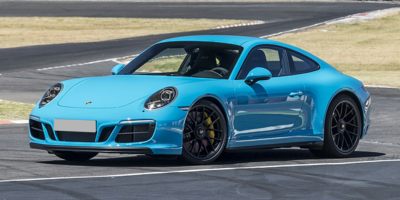The 911 debuted in the 1960s and stays true to its roots as the quintessential sports car. A rear-mounted 370-hp twin-turbo 3.0-liter flat-six powers the rear wheels. S models make 420 hp; the GTS makes 450. The T trim has the base engine but sheds excess weight. A seven-speed manual is standard; all-wheel drive and a seven-speed dual-clutch automatic are options. In coupe, convertible, or Targa form, the 911 is as luxurious as it is sure-footed, making even novices feel like racing legends.

The 911 was introduced at the Frankfurt Motor Show in 1963 with an air-cooled rear-mounted engine like the 356 and Volkswagen that preceded it. Ferry Porsche designed all three, so the similarity is understandable. The rear-engine design leant itself well to efficient packaging, allowing adequate interior space in a small automobile.
The new 911 was larger and more powerful than the 356, with a 2-litre six-cylinder engine that developed around 130 horsepower in place of the earlier car's 1.6-litre four. Both engines were horizontally-opposed "boxer" designs, with a flat bank of cylinders on each side of a center crankcase.
While the weight of the 911's engine over the rear wheels enhanced traction under acceleration, it made the car difficult to drive. The large rear mass wouldn't change direction as quickly as the front wheels might dictate, so the car, and many drivers went off the road tail first. However, race-car drivers used that oversteer to advantage, braking in advance of a turn and powering through. Compared to the understeering nose-heavy cars of the day, the Porsche was quick through the twisty bits. Over the years, Porsche engineers disciplined the 911, so later versions were easier to drive but still capable of taking an inside line through a corner.
The 911 Targa went on sale in 1966 with a stainless-steel-covered roll bar protecting the passenger area. A number of other 911 versions were introduced in the sixties. Among these were the 170-horsepower 911S, the 108-horsepower 911T and "Sportmatic" versions of both with semi-automatic transmissions.
The Carrera RS models of the early seventies are high on the list of coveted 911s. With more than 200 horsepower, large brakes and a refined suspension, the 1900- to 2100-pound sports cars could compete with the best machines on the planet. The 911 Turbo sprinted out of the gate in the mid seventies. Sold as the 930 in the U.S., it produced nearly 300 horsepower and was successful both in the market and on the race track.
The first convertible 911 was the 1982 911 SC Cabriolet. The Carrera name returned in 1983 and continued in production until 1989 with coupe, convertible and Targa models.
The 911 was heavily modified in 1989 with the launch of the Type 964. Offered in both rear-drive and four-wheel-drive versions, the 964 applied lessons learned from the successful 959 race car. The 964 series featured both the widely praised Tiptronic transmission, which allows manual shifting of an automatic gearbox, and the return of a turbo model.
The 993 version premiered in 1993. Suspension refinements and four-wheel drive made it a superb handler, and its sleek styling invoked the 959 race car. The 996 followed in 1997 and broke new ground for the 911 series with its water-cooled engine.
Today, the 911's long reign continues with the 997 series, and the indomitable 911 GT2 leads the way. With 530 horsepower and a top speed of 204 mph, it's hard to believe that this machine is a direct descendant of the car that premiered in Frankfurt 46 years ago.